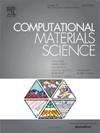Concept for databased material property description along the process chain press hardening: Implementing the Digital Material Twin and the Digital Material Shadow
IF 3.1
3区 材料科学
Q2 MATERIALS SCIENCE, MULTIDISCIPLINARY
引用次数: 0
Abstract
A Digital Twin is a virtual representation of a corresponding process of a physical object. In the context of Industry 4.0, a Digital Twin provides new opportunities for production optimization and failure prediction. Therefore, both industry and scientific research show increasing interest in Digital Twins. One of the most important sectors in the production value chain is materials engineering, which plays a very important role in the product properties and processing strategies. However, a unified material description approach for material digitalization, which is crucial for, e.g. material database setup, and strategies for implementation into real-time production are still controversial. Therefore, we suggest two concepts for implementing materials into the digital representations of production processes, an integrated digital description of the material and its properties and an extended Digital Material Twin, eDMT, by which the material processing information can be found. Furthermore, we provide an example concerning one processing chain of steel for the explanation of the eDMT concept. In contrast to the data-intensive eDMT, a dimensionality-reduced concept is suggested for the implementation of eDMT to control production processes in real-time, a Digital Material Shadow (DMS). The DMS is defined as a knowledge- and sensor-data-based, computational-efficient, simultaneous analysis and description of the material during production. Our approach defines a modular framework exemplified for press hardening of steel to thoroughly describe a material and its development during processing and production.

求助全文
约1分钟内获得全文
求助全文
来源期刊

Computational Materials Science
工程技术-材料科学:综合
CiteScore
6.50
自引率
6.10%
发文量
665
审稿时长
26 days
期刊介绍:
The goal of Computational Materials Science is to report on results that provide new or unique insights into, or significantly expand our understanding of, the properties of materials or phenomena associated with their design, synthesis, processing, characterization, and utilization. To be relevant to the journal, the results should be applied or applicable to specific material systems that are discussed within the submission.
 求助内容:
求助内容: 应助结果提醒方式:
应助结果提醒方式:


